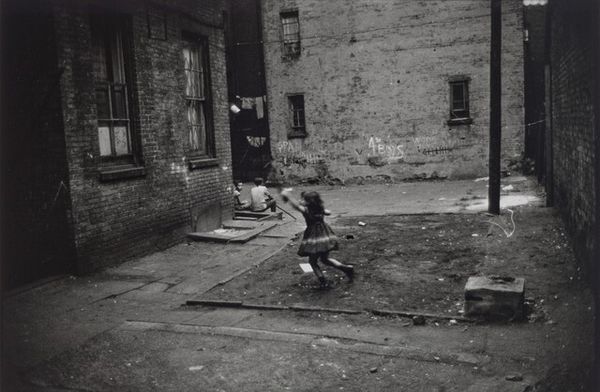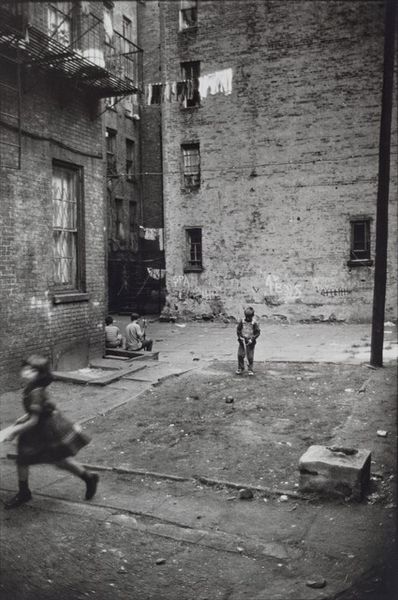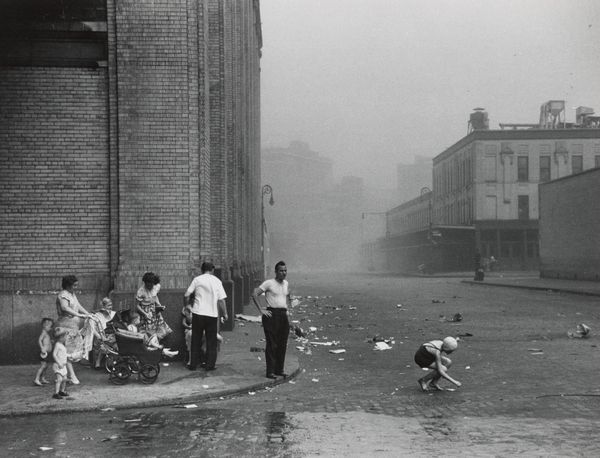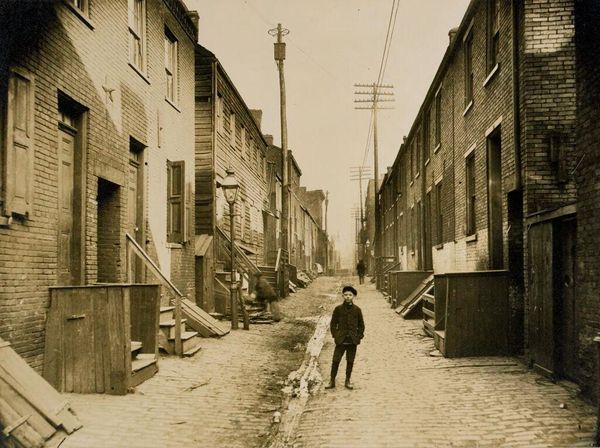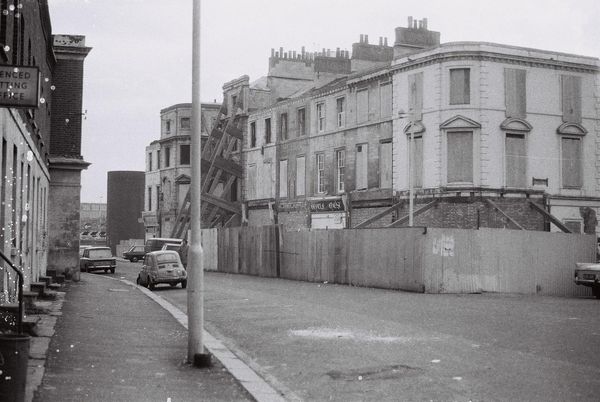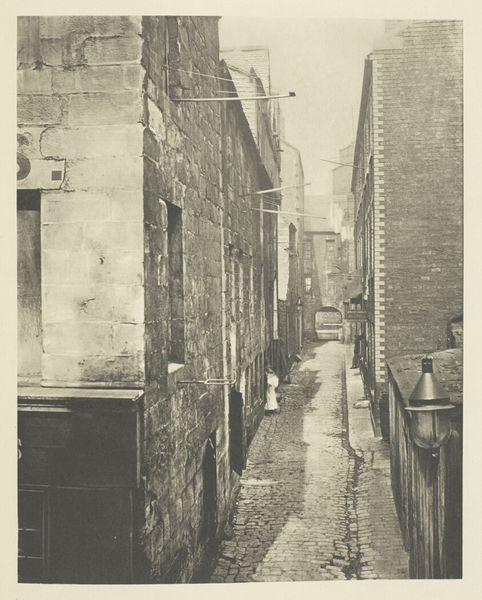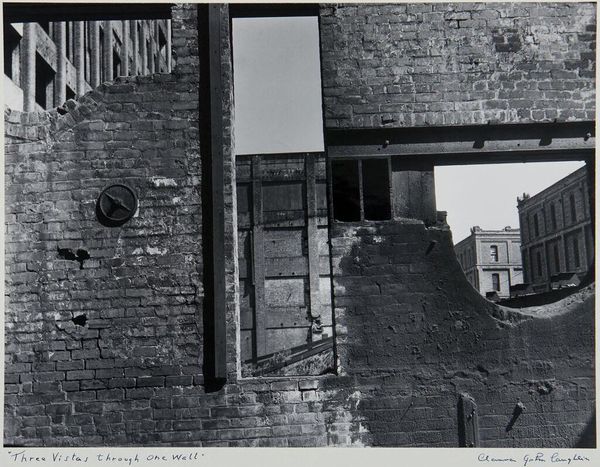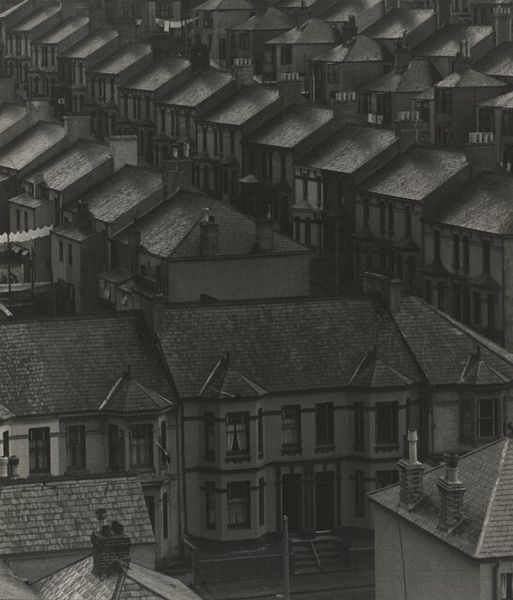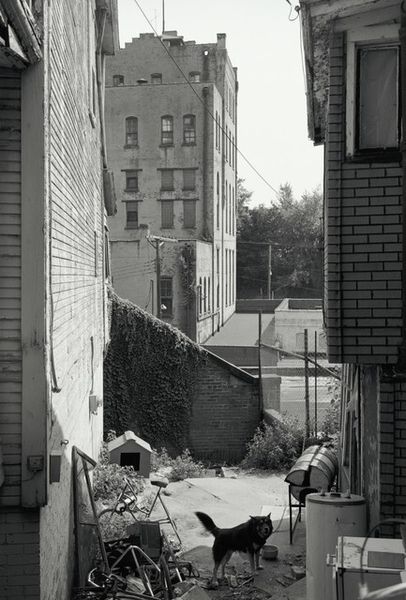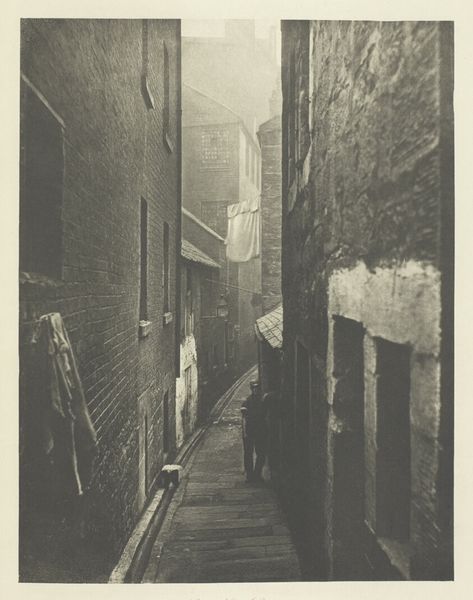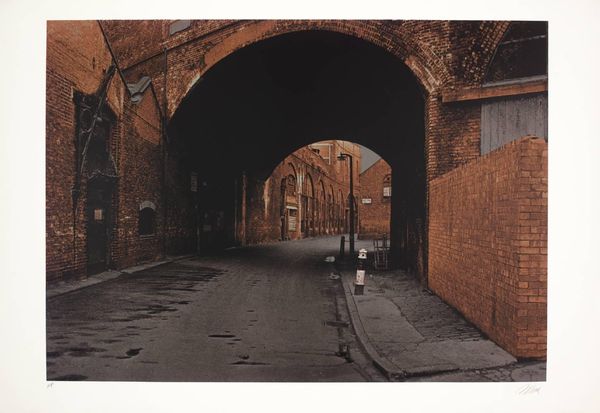
Dimensions: image: 21.5 x 32.9 cm (8 7/16 x 12 15/16 in.) sheet: 28 x 35 cm (11 x 13 3/4 in.)
Copyright: National Gallery of Art: CC0 1.0
Editor: So, here we have Robert Frank's gelatin silver print "London" from 1951. It's… stark, almost oppressive, with these heavy brick buildings looming over what seems like a desolate courtyard. And there's this one dog jumping – or is it falling? It's strangely unsettling. What do you see in this piece? Curator: I see a potent reflection of post-war anxiety. Look at the urban environment Frank chose: these monolithic brick structures. Consider the period: 1951. London was still very much rebuilding from the Blitz. These buildings speak of resilience, yes, but also of loss, of scars. That lone dog becomes a symbol of individual struggle against an imposing system. Editor: The dog's movement does add to the sense of unease. It's caught mid-air, kind of awkward, not graceful at all. Is that deliberate? Curator: Precisely! Frank often played with imperfection. It's not a romantic image of freedom; it's almost clumsy, capturing a vulnerability. And consider the context of street photography at that time – a move towards realism, capturing authentic moments, not staged or idealized scenes. How does the absence of people influence your interpretation? Editor: It definitely amplifies the loneliness. The dog is the only sign of life, but its isolation is almost more pronounced because it’s the only living being we see. Curator: The absence of humans raises questions. Where is everyone? Are they trapped inside? Are they indifferent? Frank is not just documenting a scene; he is making a statement about the human condition, about social alienation in this rebuilt environment. What impact does that limited grayscale palette have on you? Editor: The lack of color makes it feel even more bleak and timeless, like this scene could be happening in any era, which almost heightens that sense of universal anxiety you mentioned. It’s quite powerful. Curator: Exactly! Seeing this photograph alongside Frank's other work allows us to trace those continuing trends across the twentieth century that are, sadly, still prescient today. It truly provokes reflection about what "public" art can achieve when in conversation with the current world events and historical antecedents. Editor: This makes me think differently about street photography; seeing how social and historical contexts shape a seemingly simple image.
Comments
No comments
Be the first to comment and join the conversation on the ultimate creative platform.
